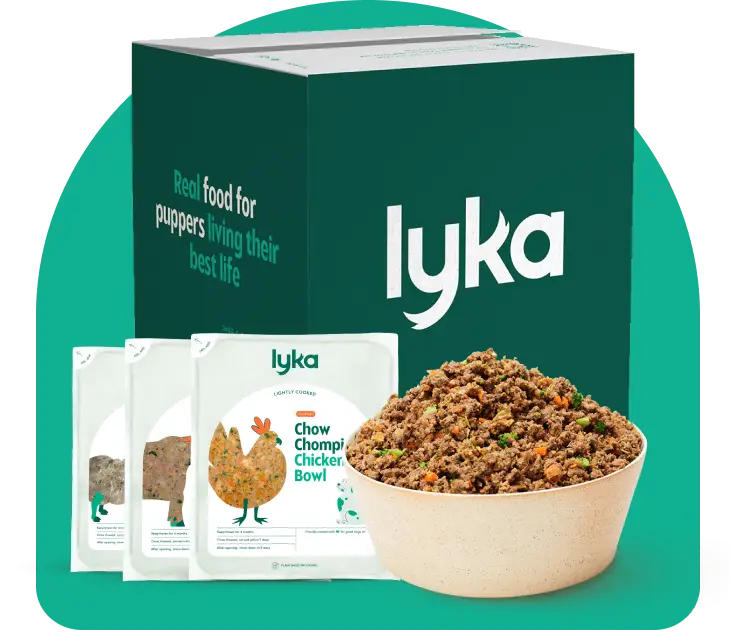Summary
Here are five important updates you may not know:
1. Not just grain-free: Diet-associated DCM was reported in dogs eating both grain-free and grain-containing diets1.
2. Complete and balanced is key: A 2025 study2 found no cardiac changes in dogs fed well-balanced and complete grain-free or grain-inclusive diets over 18 months.
3. Legume-rich diets are still the highest risk: Most reported diets contain legume seeds ("pulses") like peas and lentils high on the ingredient list1.
4. The mechanism remains unclear — not solely taurine deficiency; bile acid metabolism and carnitine regulation may also play roles.
5. Fewer recent cases: Reported cases to the FDA have significantly decreased since the initial alert1.
Since their initial report in 2018, the FDA’s position on the link between diet and canine DCM changed several times as research emerged.
In 2022, they said they wouldn’t provide any further updates until further research was conducted, and definitive conclusions could be drawn.
3 years on, what have we learnt? And, how does this affect canine patients in Australia?
Dilated Cardiomyopathy (DCM)
)
Dilated cardiomyopathy (DCM), is a myocardial disease characterised by dilation and impaired contraction of the cardiac ventricles, particularly the left ventricle, resulting in systolic dysfunction. Over time, affected dogs can develop volume overload, arrhythmias, and often congestive heart failure (CHF).
The causes of DCM are categorised into primary causes (genetic predispositions) and secondary causes (drugs, infectious, endocrine and nutritional or ”diet-associated”).
Diet-associated DCM
Between 2018 and 2019, the FDA (U.S. Food and Drug Administration) published three alerts investigating a link between diet and cases of dilated cardiomyopathy in dogs.
Initially, it was thought that this occurred as a result of a deficiency in the amino acid, taurine, linked with non-traditional, “grain-free” diets high in legumes, such as pulses, as well as potatoes.
Dogs with secondary, diet-associated DCM appeared to show improvements in echocardiographic variables and longer survival times after diet change when compared to dogs with primary (genetic) DCM3. Many breeds have been affected by diet-associated DCM, including those that are at-risk for primary DCM (e.g. Dobermans) and those that aren’t4.
Since the initial report, there have been multiple published studies on the topic, and the FDA have updated their position.
What is the latest on the issue?
Diet-associated DCM was reported with both grain-free and grain-containing diets1.
In a 2025 study2, dogs showed no clinically significant changes or between-group changes in cardiac biomarkers or taurine levels when fed grain-free or grain-inclusive diets with varying ingredient profiles over 18 months, indicating complete and balanced nutrition supports normal cardiac function, regardless of grain content.
To date, most diets associated with the reports of secondary DCM contain legume seed ingredients, also called “pulses” (e.g., peas, lentils, etc.), high in their ingredient lists1.
The mechanism of diet-associated DCM remains unclear, and is not just related to dietary taurine deficiency, but likely also altered bile acid metabolism, gut microbiome changes and carnitine dysregulation.
Overall, the number of cases of diet-associated DCM reported to the FDA has significantly declined since the initial report1.
This may be due to either a shift in pet food formulation, decreased reporting from veterinarians, or a combination of the two.
The mechanism behind diet-associated DCM
The discussion is complex, with various characteristics of the diet, including ingredients, cooking method and digestibility, interacting with the genetics and existing health conditions of the dog consuming the diet.
Diets containing high levels of pulses (e.g. peas, lentils, chickpeas) and potatoes have been most closely linked to diet-associated DCM1.
These ingredients are thought to be higher in certain “anti-nutrients” that reduce the bioavailability and absorption of amino acids like taurine. While the mechanism remains unclear, taurine deficiency5, carnitine dysregulation6, altered bile acid metabolism and gut microbiome7 changes likely all play a role.
It’s important to note that potatoes and sweet potatoes have a lower risk in comparison to pulses8.
Taurine
Taurine is an amino acid found exclusively in animal protein sources (not in plant sources)9 and can be formed endogenously in dogs by combining its amino acid precursors, cysteine and methionine. Taurine supports normal myocardial function, preventing arrhythmias, systolic dysfunction and minimising oxidative stress10.
Dogs, unlike cats, are thought to synthesise taurine endogenously, but ample absorption of the amino acid precursors, methionine and cysteine is still required11.
Very low-protein diets, certain lamb meal and rice diets, and some high fibre diets have been associated with taurine deficiency12.
Taurine helps to form bile salts through its conjugation with bile acids7, meaning an increase in bile acid secretion or metabolism may lead to taurine loss.
The role of anti-nutrients
So-called “anti-nutrients” are compounds within food, typically plant matter, that interfere with the absorption, digestion, or utilisation of nutrients13.
Pulses, such as lentils and peas, are typically high in lectins and phytates, both of which may interfere with the absorption of taurine, carnitine and their precursors14.
Similarly, pulses are sources of soluble fibre. An excess of soluble fibre may increase bile acid secretion and lead to microbiota-driven changes affecting taurine or carnitine bioavailability and metabolism, though the exact mechanism needs further exploration.
So, why were grain-free diets implemented?
The initial report failed to report some cases of diet-associated DCM in dogs consuming grain-containing diets, highlighting that the issue is not exclusive to grain-free formulations. This has led to some controversy and debate around the original findings.
However, there is an important distinction when it comes to grain-free kibble compared to grain-free fresh, whole foods.
By design, dry kibble requires a significant carbohydrate content to support the extrusion process and maintain its biscuit-like texture. When grains are removed, manufacturers often replace them with alternative carbohydrate sources—most commonly pulses (e.g., peas, lentils) and potatoes.
As a result, grain-free kibble typically contains higher levels of these ingredients than either grain-containing kibble or fresh, whole food diets (typically higher protein and lower carbohydrate), possibly increasing the risk of nutritional imbalances linked to DCM.
💡 Clinical tips: Minimising the risk of diet-associated DCM in your patients.
Complete a full diet history, including the exact product and flavour of commercial pet food as well as any supplementary feeding.
Contact the pet food manufacturer if ingredient labelling is unclear, or to get specific nutritional analyses.
Avoid diets high in at-risk ingredients, including pulses such as peas, chickpeas and lentils.
Consider both the level and digestibility of animal protein in the diets.
Ensure the diet is complete and balanced to support cardiac function. If home cooking, the diet would ideally be balanced by a Board-Certified Veterinary Nutritionist.
Lyka’s Fresh, Whole Food Approach
)
Lyka meals are formulated by Board-Certified Veterinary Nutritionists with the latest scientific evidence on diet-associated DCM at the forefront.
Lyka offers both grain-containing and grain-free diets. The Beef, Chicken, Kangaroo and Hypoallergenic Pro (Goat) meals are grain-free, however, grains are not substituted with a high amount of non-grain starch.
All Lyka meals are free from pulses and legumes. They include low levels of low glycaemic index carbohydrates, providing an optimal level of mixed soluble and insoluble fibre.
Lyka meals are high in highly digestible animal-sourced protein, ensuring ample levels of taurine, carnitine and their precursors; methionine, lyseine, cysteine, safely above AAFCO- and FEDIAF-recommended minimums to support endogenous taurine and carnitine synthesis and cardiac health.
Lyka meals are formulated by Board-Certified Veterinary Nutritionists to support cardiac health
)
Lyka supports cardiac health by supporting weight management and containing high levels of highly digestible protein, antioxidants and omega-3 fatty acids.
For dogs with existing cardiac disease, our technical veterinary team are here to support your specific patient’s needs.
References
FDA (2024, August 19). Questions & Answers: FDA’s Work on Potential Causes of Non-Hereditary DCM in Dogs https://www.fda.gov/animal-veterinary/animal-health-literacy/questions-answers-fdas-work-potential-causes-non-hereditary-dcm-dogs. Accessed 14 July, 2025.
Morris, E. M., Stiers, C. A., Hancock, L. B., & Gross, K. L. (2025). Different carbohydrate sources in dog foods supported overall health and cardiac function: An 18-month prospective study in healthy adult dogs. Journal of Animal Science. https://doi.org/10.1093/jas/skaf225
Adin, D., DeFrancesco, T. C., Keene, B., Tou, S., Meurs, K., Atkins, C., Aona, B., Kurtz, K., Barron, L., & Saker, K. (2019). Echocardiographic phenotype of canine dilated cardiomyopathy differs based on diet type. Journal of veterinary cardiology : the official journal of the European Society of Veterinary Cardiology, 21, 1–9. https://doi.org/10.1016/j.jvc.2018.11.002
Walker, A. L., DeFrancesco, T. C., Bonagura, J. D., Keene, B. W., Meurs, K. M., Tou, S. P., Kurtz, K., Aona, B., Barron, L., McManamey, A., Robertson, J., & Adin, D. B. (2022). Association of diet with clinical outcomes in dogs with dilated cardiomyopathy and congestive heart failure. Journal of veterinary cardiology : the official journal of the European Society of Veterinary Cardiology, 40, 99–109. https://doi.org/10.1016/j.jvc.2021.02.001
Kaplan, J. L., Stern, J. A., Fascetti, A. J., Larsen, J. A., Skolnik, H., Peddle, G. D., Kienle, R. D., Waxman, A., Cocchiaro, M., Gunther-Harrington, C. T., Klose, T., LaFauci, K., Lefbom, B., Machen Lamy, M., Malakoff, R., Nishimura, S., Oldach, M., Rosenthal, S., Stauthammer, C., O'Sullivan, L., … Ontiveros, E. (2018). Taurine deficiency and dilated cardiomyopathy in golden retrievers fed commercial diets. PloS one, 13(12), e0209112. https://doi.org/10.1371/journal.pone.0209112
Smith, C. E., Parnell, L. D., Lai, C. Q., et al. (2021). Investigation of diets associated with dilated cardiomyopathy in dogs using foodomics analysis. Scientific Reports, 11, 15881. https://doi.org/10.1038/s41598-021-94464-2
Ridlon, J. M., Harris, S. C., Bhowmik, S., Kang, D. J., & Hylemon, P. B. (2016). Consequences of bile salt biotransformations by intestinal bacteria. Gut microbes, 7(1), 22–39. https://doi.org/10.1080/19490976.2015.1127483
FDA (2022, December 23). FDA Investigation into Potential Link between Certain Diets and Canine Dilated Cardiomyopathy. https://www.fda.gov/animal-veterinary/outbreaks-and-advisories/fda-investigation-potential-link-between-certain-diets-and-canine-dilated-cardiomyopathy. Accessed 14 July, 2025.
McCauley, S. R., Clark, S. D., Quest, B. W., Streeter, R. M., & Oxford, E. M. (2020). Review of canine dilated cardiomyopathy in the wake of diet-associated concerns. Journal of animal science, 98(6), skaa155. https://doi.org/10.1093/jas/skaa155
Ripps, H., & Shen, W. (2012). Review: taurine: a "very essential" amino acid. Molecular vision, 18, 2673–2686.
Mansilla, W. D., Marinangeli, C. P. F., Ekenstedt, K. J. E., Larsen, J. A., Aldrich, G., Columbus, D. A., Weber, L., Abood, S. K., & Shoveller, A. K. (2019). Special topic: The association between pulse ingredients and canine dilated cardiomyopathy: Addressing the knowledge gaps before establishing causation. Journal of Animal Science, 97(3), 983–997. https://doi.org/10.1093/jas/sky488
Tôrres, C. L., Backus, R. C., Fascetti, A. J., & Rogers, Q. R. (2003). Taurine status in normal dogs fed a commercial diet associated with taurine deficiency and dilated cardiomyopathy. Journal of animal physiology and animal nutrition, 87(9-10), 359–372. https://doi.org/10.1046/j.1439-0396.2003.00446.x
Samtiya, M., Aluko, R. E., & Dhewa, T. (2020). Plant food anti-nutritional factors and their reduction strategies: An overview. Food Production, Processing and Nutrition, 2, 6. https://doi.org/10.1186/s43014-020-0020-5
Quilliam, C., Ren, Y., Morris, T., Ai, Y., & Weber, L. P. (2021). The effects of 7 days of feeding pulse-based diets on digestibility, glycemic response and taurine levels in domestic dogs. Frontiers in Veterinary Science, 8, Article 654223. https://doi.org/10.3389/fvets.2021.654223
)
)

)
)
)
)
)
